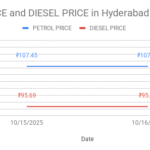Tyre oil or Pyrolysis oil is the end product of water tyres. The oil is widely used as industrial fuel as a substitute to crude based fuel oil, furnace oil and light diesel oil. Pyrolysis is a thermal degradation process carried out in the absence of oxygen so that the combustion of the waste does not take place. It is found that without engine modification, the tyre pyrolysis offers better engine performance whereas the heating value is higher. corrosion and fouling are constant challenges in pyrolysis processing due tot he acidic, oxygen-sensitive nature of pyrolysis oil. The crude-like oil has high energy density with a lower heating value of 33.8-36.9 MJ/kg and 5-20 wt% oxygen and renewable chemicals. The HTL process differs from pyrolysis as it can process wet biomass and produce a bio-oil that contains approximately twice the energy density of pyrolysis oil.
TYRE PYROLYSIS OIL – SPECIFICATION
| S.No | Test | Method of Testing | UNITS | STANDARD VALU |
| 1. | Density @ 15°C | ASTM D 4052:2002 | gm/cc | TO REPORT |
| 2. | Acidity (mg KOH/gm) | ASTM D 974:2002 | mgKOH/gm | NIL |
| 3. | API Gravity @ 60°F | ASTM D 1298:1999 | degrees | 46.67 |
| 4. | Flash point COC | ASTM D 92-05a | °C | 66 MIN |
| 5. | Kinematic viscosity @ 40°C | ASTM D 445:2005 | CST | 2-4 – 15.7 |
| 6. | Color | ASTM D 1500:2004a | – | Dark/Black |
| 7. | Conradson carbon residue | ASTM D 189:2005 | ppm wt | 0.010% (wt) |
| 8. | Asphaltine content | ASTM D 3279:2001 | wt | 0.21% (wt) |
| 9. | Ash content | ASTM D 482:2003 | % by weight | <0.01% (wt) |
| 10. | Calculated carbon aromatic index | ISO 8217:1996 | – | 763.4 |






